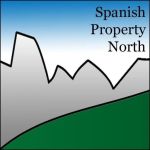As we enter the second half of January, winter is finally arriving here in northern Spain. Over the weekend, from our home high in the Cordillera Cantábrica mountains of central Asturias, we watched a steady trip-trap of horses being led down from their grazing on the high plateaus, as farmers prepped for the predicted arrival of Storm Gérard. Our house is at 700m above sea level and we are surrounded by high mountain passes and even higher peaks so it’s a great spot from which to witness the unfurling of winter.
Given the forecast we decided to undertake the same pilgrimage as our farming neighbours, up onto one of those high plateaus. Our hike up to the Braña of Vicecenturo (approx 1,300m altitude) from the Puerto de Marabio (1,000m alt.) was, however, for pure pleasure; to simply breathe in the fresh mountain air and drink in the spectacular views before Gérard would keep us indoors for a few days. Here’s a selection of snaps from Saturday:
Sure enough, today rain and wind have raged and the rivers are running in full spate, mini waterfalls sprout at the sides of the road that cuts through the steep-sided gorge at the bottom of our valley. On the early morning school run we passed the snow plough heading towards Puerto Ventana, on the border with León, where the snow will already be fast accumulating.
Our usually spectacular views have been obscured and it’s been a great day for head-down office work, cracking on with all those mundane Monday tasks. And all the while we are happy in the knowledge that when the rain does stop and the sun comes out it will be to dazzle upon gleaming white-capped peaks.
The excitement is palpable within the large winter and mountain sports community who have had to wait longer than usual for their playground to come into condition. The ski stations are scheduled to open on the weekend and the cross-country skiers and snowshoers will be out in force all over the Cordillera!
P.S. We know that weather and climate is a fascination for anyone with an interest in Asturias. Would you like to see more weather-related posts to get a feel for what the lived experience is? Please put your questions and suggestions below in the comments or email us at info@spanishpropertynorth.com
P.P.S. If you fancy visiting the trails and crags of Teverga for yourself then check out our holiday rental apartment in the heart of San Martín de Teverga
Below are some photos from the last big snow we had, in January 2021 when Storm Filomena passed through and when we got out snowshoeing at Marabio.






